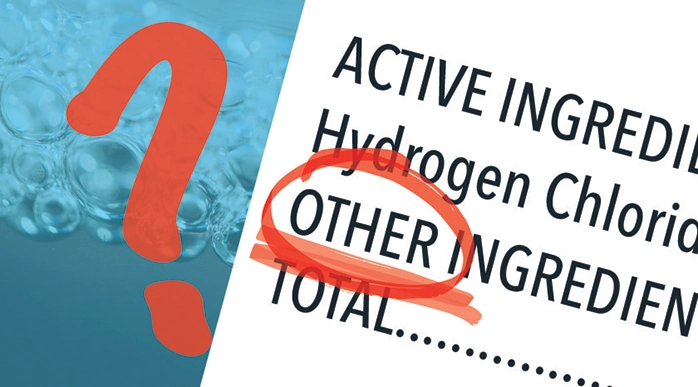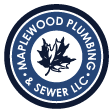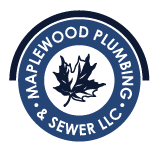
Many bathroom cleaners contain chemicals that can be harmful. While these products are generally safe for their intended use, understanding their toxicity levels and proper usage helps prevent unnecessary exposure to harsh chemicals.
Key Takeaways
- The nastier the job, the nastier the chemicals. Mold and mildew removers are usually the most toxic, followed by toilet bowl cleaners and drain cleaners.
- Mixing cleaners is a big no. Seriously, don’t do it. Bleach plus ammonia equals chlorine gas, and that’s not something you want to discover the hard way.
- “Natural” doesn’t always mean “safe.” Even vinegar can irritate your lungs if you’re using it in a small bathroom with poor ventilation.
- Fresh air goes a long way. Open a window, turn on that fan, or prop the door open. Your lungs will thank you.
Are Bathroom Cleaners Toxic to Humans?
Most commercial bathroom cleaners contain chemicals that can cause respiratory irritation, skin burns, or other health issues if misused. Some are more toxic than others, and the level of “danger” depends on the specific ingredients and concentration.
The most toxic bathroom cleaners typically contain:
- High concentrations of bleach (sodium hypochlorite)
- Strong acids like hydrochloric acid
- Ammonia-based compounds
- Acidic substances like sodium hydroxide
Products are required to display hazard warnings that indicate their toxicity level:
- Danger: Most toxic, can cause severe injury or death
- Warning: Moderately toxic, can cause temporary injury
- Caution: Least toxic among labeled products
Which Bathroom Cleaners Are the Most Toxic?
Mold and Mildew Removers
These products top the toxicity list because they’re designed to kill tough organisms. They often contain high concentrations of bleach (5-10%) plus other harsh chemicals to penetrate surfaces.
Toilet Bowl Cleaners
Many toilet bowl cleaners contain hydrochloric acid, which can cause severe burns and respiratory damage. These products are particularly dangerous because toilets are often in small, poorly ventilated spaces.
Drain Cleaners
While technically not bathroom cleaners, drain cleaners used in bathroom sinks and tubs often contain sulfuric acid or sodium hydroxide, making them extremely harsh and dangerous.
Disinfectant Sprays
These contain antimicrobial agents like quaternary ammonium compounds, which can trigger asthma and cause skin irritation with repeated exposure.
What Ingredients Should You Avoid?
Sodium Hypochlorite (Bleach)
- Found in mold removers, disinfectants, whitening cleaners
- Risks of respiratory irritation, chemical burns, chlorine gas if mixed with acids
Hydrochloric Acid
- Found in toilet bowl cleaners, calcium/lime removers
- Risks of severe burns, respiratory damage, eye injury
Ammonia
- Found in glass cleaners, some all-purpose cleaners
- Risks of lung irritation, chloramine gas if mixed with bleach
Sodium Hydroxide (Lye)
- Found in oven cleaners, some drain cleaners
- Risks of caustic burns, severe eye damage
Quaternary Ammonium Compounds
- Found in disinfectant wipes and sprays
- Risks of asthma triggers, skin sensitivity
Glycol Ethers
- Found in glass cleaners, all-purpose cleaners
- Risks of nervous system effects with prolonged exposure
What Are the Best Non-Toxic Bathroom Cleaners?
Commercial Options
- EPA Safer Choice Certified Products: These products meet strict criteria for human and environmental safety while maintaining cleaning effectiveness.
- Plant-Based Cleaners: Products with foaming agents derived from plants (rather than petroleum) typically have lower toxicity profiles.
Natural Alternatives
- Equal parts white vinegar and water
- 3% hydrogen peroxide (for disinfecting)
- 70% isopropyl alcohol (for disinfecting)
- Baking soda paste (for tough stains)
- Lemon juice (for mineral deposits)
Note: While safer, natural cleaners might not be as effective against all types of bacteria and viruses.
Bathroom Cleaner Toxicity Rankings
Here’s a comprehensive chart of common bathroom cleaning products, ranked from most to least toxic:
|
Rank |
Product | Toxic Ingredient |
Toxicity Level |
| 1 | The Works Toilet Bowl Cleaner | Hydrochloric acid (20%) | Very High |
| 2 | Drano Max Gel | Sodium hydroxide, sodium hypochlorite | Very High |
| 3 | X-14 Mildew Stain Remover | Sodium hypochlorite (8.25%) | Very High |
| 4 | CLR Mold & Mildew Remover | Sodium hypochlorite, sodium hydroxide | Very High |
| 5 | Scrubbing Bubbles Mega Shower Foamer | Sodium hypochlorite, ethanolamine | High |
| 6 | Lysol Toilet Bowl Cleaner | Hydrochloric acid (9.5%) | High |
| 7 | Comet Bathroom Cleaner | Sodium hypochlorite, sodium carbonate | High |
| 8 | Tilex Mildew Root Penetrator | Sodium hypochlorite | Moderate |
| 9 | Lime-Away | Sulfamic acid, citric acid | Moderate |
| 10 | Kaboom Foam-Tastic | Sodium hypochlorite (diluted) | Moderate |
| 11 | Lysol Disinfectant Spray | Quaternary ammonium compounds | Moderate |
| 12 | Windex Glass Cleaner | Ammonia, glycol ethers | Moderate |
| 13 | Scrubbing Bubbles Daily Shower | Surfactants, mild preservatives | Low |
| 14 | 409 All-Purpose Cleaner | Surfactants, mild solvents | Low |
| 15 | Method Bathroom Cleaner | Plant-based surfactants | Low |
| 16 | Mrs. Meyer’s Clean Day | Essential oils, plant surfactants | Low |
| 17 | Seventh Generation Bathroom | Plant surfactants (EPA Safer Choice) | Very Low |
| 18 | Simple Green | Biodegradable surfactants | Very Low |
| 19 | White Vinegar (5% acetic acid) | Acetic acid | Very Low |
| 20 | Dr. Bronner’s Castile Soap | Organic plant oils, potassium hydroxide | Very Low |
Frequently Asked Questions
Is it safe to clean the bathroom with bleach?
Bleach can be safe for bathroom cleaning when used properly, but it requires careful handling. Always ensure excellent ventilation, wear gloves, and never mix bleach with other products. Limit exposure time by leaving the room while the bleach works, and rinse surfaces thoroughly afterward. People with asthma or respiratory sensitivities should avoid bleach-based cleaners.
Is it safe to clean the bathroom while pregnant?
Pregnant women should avoid cleaning products with strong fumes or harsh chemicals when possible. The safest approach is to use gentler, plant-based cleaners or have someone else handle the heavy-duty cleaning. If you must use stronger products, ensure maximum ventilation, wear gloves, and limit your time in the room. Always consult your doctor if you have concerns about chemical exposure during pregnancy.
Can I mix different bathroom cleaners together?
Never mix different bathroom cleaners. This can create dangerous chemical reactions that produce toxic gases. The most dangerous combination is bleach with ammonia or acids, which creates chlorine gas. Always use one product at a time, rinse surfaces between different products, and store cleaners separately.
What are the signs of chemical exposure?
Watch for these symptoms that may indicate overexposure to cleaning chemicals:
- Coughing or throat irritation
- Headaches or dizziness
- Skin redness or burning
- Eye watering or burning
- Difficulty breathing
If you experience severe symptoms, seek fresh air immediately and contact poison control if needed.
The Bottom Line
Most bathroom cleaners are safe when used as directed, but some pose significantly higher risks than others. The key is matching the product’s strength to your actual cleaning needs and always prioritizing proper ventilation. For routine cleaning, safer alternatives often work just as well with less risk to your health.
We’re the plumbing company that’s been keeping things flowing smoothly in St. Louis for 40+ years. Whether you’re dealing with bathroom clogs or other plumbing troubles, tap into our expertise. Give us a call today!
Comments are closed


